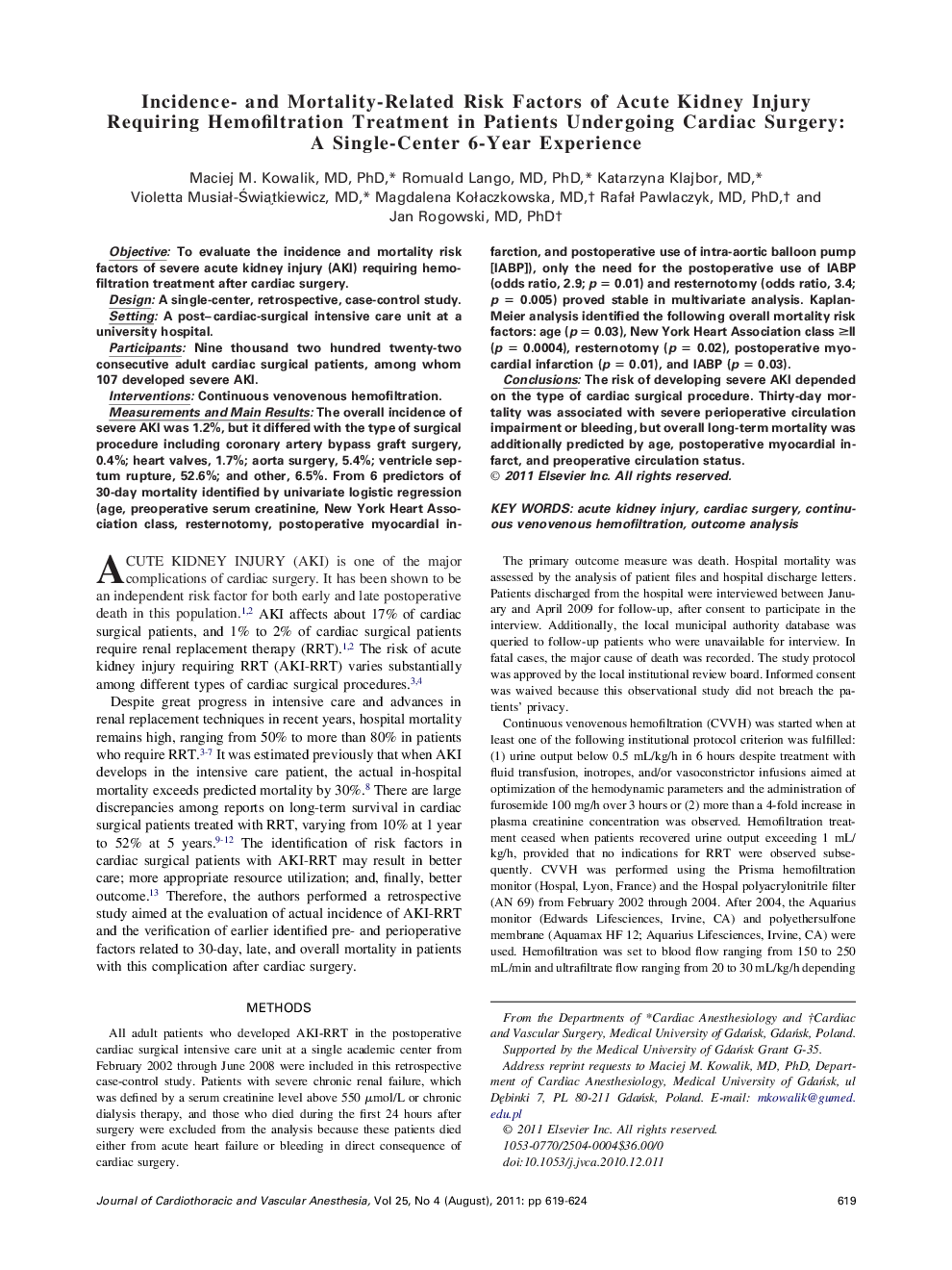| Article ID | Journal | Published Year | Pages | File Type |
|---|---|---|---|---|
| 2759936 | Journal of Cardiothoracic and Vascular Anesthesia | 2011 | 6 Pages |
ObjectiveTo evaluate the incidence and mortality risk factors of severe acute kidney injury (AKI) requiring hemofiltration treatment after cardiac surgery.DesignA single-center, retrospective, case-control study.SettingA post–cardiac-surgical intensive care unit at a university hospital.ParticipantsNine thousand two hundred twenty-two consecutive adult cardiac surgical patients, among whom 107 developed severe AKI.InterventionsContinuous venovenous hemofiltration.Measurements and Main ResultsThe overall incidence of severe AKI was 1.2%, but it differed with the type of surgical procedure including coronary artery bypass graft surgery, 0.4%; heart valves, 1.7%; aorta surgery, 5.4%; ventricle septum rupture, 52.6%; and other, 6.5%. From 6 predictors of 30-day mortality identified by univariate logistic regression (age, preoperative serum creatinine, New York Heart Association class, resternotomy, postoperative myocardial infarction, and postoperative use of intra-aortic balloon pump [IABP]), only the need for the postoperative use of IABP (odds ratio, 2.9; p = 0.01) and resternotomy (odds ratio, 3.4; p = 0.005) proved stable in multivariate analysis. Kaplan-Meier analysis identified the following overall mortality risk factors: age (p = 0.03), New York Heart Association class ≥II (p = 0.0004), resternotomy (p = 0.02), postoperative myocardial infarction (p = 0.01), and IABP (p = 0.03).ConclusionsThe risk of developing severe AKI depended on the type of cardiac surgical procedure. Thirty-day mortality was associated with severe perioperative circulation impairment or bleeding, but overall long-term mortality was additionally predicted by age, postoperative myocardial infarct, and preoperative circulation status.
